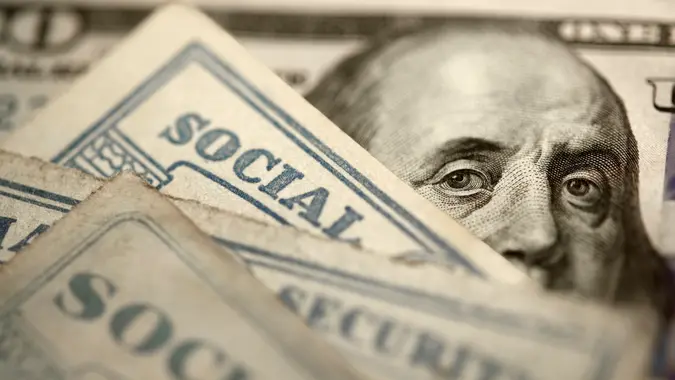5 Signs You’re Spending Too Much on Luxuries in Retirement

Commitment to Our Readers
GOBankingRates' editorial team is committed to bringing you unbiased reviews and information. We use data-driven methodologies to evaluate financial products and services - our reviews and ratings are not influenced by advertisers. You can read more about our editorial guidelines and our products and services review methodology.

20 Years
Helping You Live Richer

Reviewed
by Experts

Trusted by
Millions of Readers
Retirement is a time when you can finally indulge in all those things you were too frugal to do while working. The problem is, it’s easy to get carried away living your best life on travels and other luxuries, and not realize you’re depleting your savings.
“A retiree can spend as much as they want on luxury goods if they’re not going over their budget,” said Melanie Musson, finance expert with Insurance Providers.
“But, if they’ve worked out how much their income will be to last through the rest of their lives, and they’re spending more than they planned, that’s a sign they’re spending too much on luxury goods.”
Below are some signs you might be spending too much on luxuries in retirement.
Credit Card Balances Are Growing Monthly
“When I review retired clients’ finances, rising credit card debt is a major red flag,” said Kevin Shahnazari, founder and CEO of FinlyWealth.
“One retired couple I worked with had always maintained a zero balance but suddenly accumulated $15,000 in credit card debt within six months.”
Upon examination, he found they were charging luxury skincare products, designer clothing and high-end restaurants to their cards without paying the full balance.
“This behavior can quickly spiral — the average credit card interest rate of 24.59% can devastate a fixed retirement income,” Shahnazari said.
Retirement Account Withdrawals Exceed the 4% Rule
“The 4% rule suggests withdrawing no more than 4% of retirement savings annually, adjusted for inflation,” said Shahnazari.
“I recently counseled a retired executive who was withdrawing 7% yearly to maintain her pre-retirement lifestyle, including monthly spa treatments averaging $500 and quarterly shopping sprees at luxury boutiques.”
At this rate, he said her retirement savings would be depleted 12 years earlier than planned.
“We had to implement immediate changes to prevent a financial crisis in her later years,” Shahnazari continued.
Essential Expenses Are Being Compromised
According to Shahnazari, some retirees start skipping necessary home maintenance or medical appointments while continuing to spend on luxuries.
“A client of mine delayed replacing his home’s failing water heater but spent $2,000 on a designer watch,” he recounted.
He said this prioritization of wants over needs puts both financial and physical well-being at risk.
“Retirement planning should always secure essentials before luxuries,” the expert advised.
Investment Portfolios Are Being Liquidated Prematurely
When retirees start selling investments outside their planned withdrawal strategy to fund luxury purchases, Shahnazari said it’s a serious warning sign.
“One of my clients sold $50,000 in blue-chip stocks to fund a luxury cruise, disrupting his carefully planned income stream,” he said. “This not only reduced his future earning potential but also triggered unnecessary tax liabilities.”
Guilt Or Secrecy Around Spending
According to Shahnazari, financial behavior changes often indicate problematic spending.
“I’ve observed retirees hiding shopping bags, deflecting conversations about money or expressing guilt after purchases,” he said.
“One client admitted she felt ashamed every time she bought expensive anti-aging creams but couldn’t stop spending over $1,000 monthly on premium skincare while her savings dwindled.”
Additional Advice
If a retiree is dipping into savings to cover luxuries, Musson said they’re spending too much on them.
“You get to choose your income in retirement. You should also have an emergency fund established,” she said.
She added that the fund should only be used to cover unexpected necessities.
“For example, if your car’s transmission goes, you can use your emergency savings to buy a new car or rebuild your transmission,” Musson explained.
The expert emphasized that an emergency savings fund is not meant to cover the fun extras.
“If a retiree lets things go, like the lawn, upkeep on the house or car maintenance, so they can keep up with spa days and designer clothing, they’re spending too much on the luxuries,” Musson said.
 Written by
Written by  Edited by
Edited by 

























